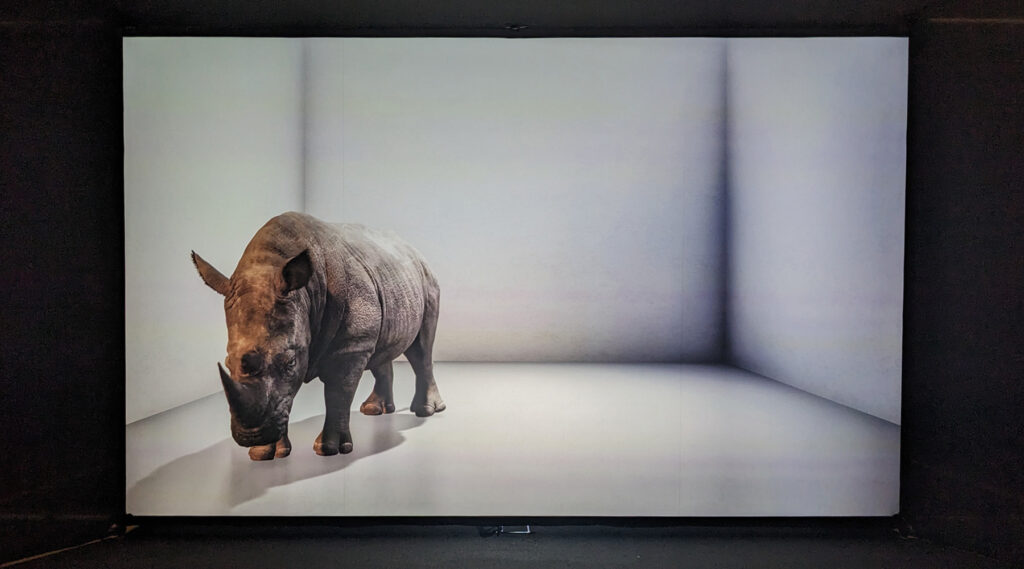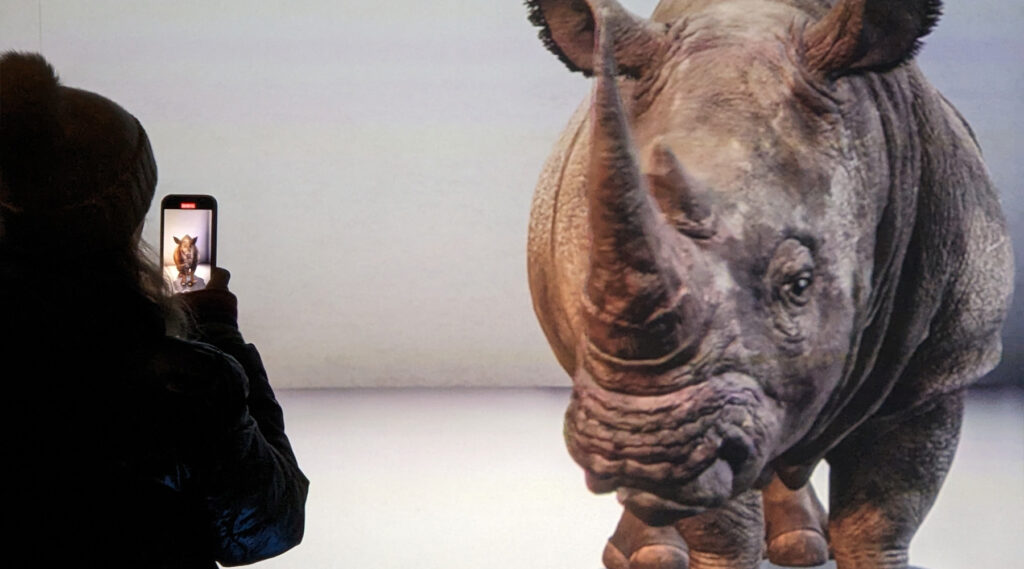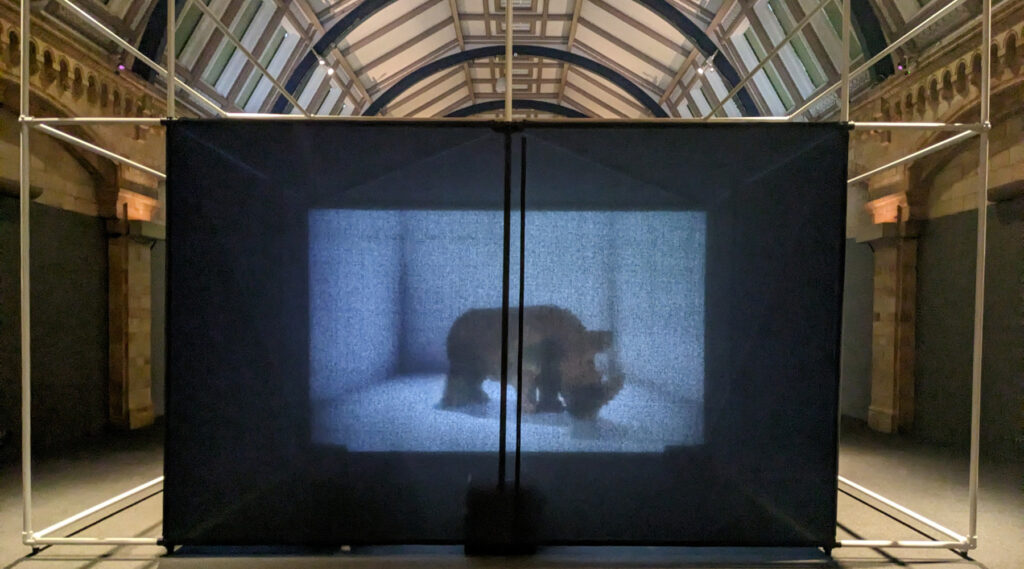Four years ago, the last male northern white rhinoceros died in a zoo, but now a digital recreation has come to life in the Natural History Museum and in doing so raises questions about how we can bring extinct species back to life.
You can hear the rhino before you see it and around a corner from a display of books about rhinos, there’s a large screen showing a white sanitised room. Depending on when you arrive, the rhino comes alive as a pixellated mass that wanders around its digital cage learning where the walls are and becoming more defined until it evolves into a northern white rhinoceros, and starts stomping around its pen before vanishing once again.
The rhino is a composite creation, not quite a real representation of a real rhino, so it’s an it, not a he or a she. In that sense, it’s the same as the dinosaurs in the room opposite, genderless.
The sounds in the exhibition are of a northern white rhinoceros, recorded from the Czech Republic zoo, but unless you speak rhino, these could be nothing more than gibberish. As if someone took a scrabble board and threw it up in the air and then recreated a simulation of human speech from how the letters landed on the floor.
Obviously, the digital rhino is not alive, but is it a better representation than the classic stuffed rhino that can be found around the back of the display? Neither are alive, and the exhibition encourages us to ponder which would be the better way of remembering an extinct animal.
The idea of resurrecting a species, digitally or for real, raises questions about the nature of what makes a species unique which is what this exhibition is looking at. Is it just the DNA, or is there something learned from parents about behaviour and culture that is also critical to their uniqueness, and would a northern white rhinoceros born to a surrogate mother really be a northern white rhinoceros?
Cells collected from the last male rhino have been coaxed into stemcells, and then heart cells — and a video of the beating heart of a long dead rhino opens the exhibition. But is it really the rhino, or just a Petrie dish of cells tricked to behave a certain way?
The exhibition is clever in how it causes us to question the nature of existence, but undeniably, the video recreation is fun to watch and will delight the kids.
The exhibition, The Lost Rhino is at the Natural History Museum until March 2023, and is free to visit. It’s opposite the dinosaur rooms.










Amazing that the Natura History Museum team creates these exhibits and stimulates young minds about the Big History of life on our planet .